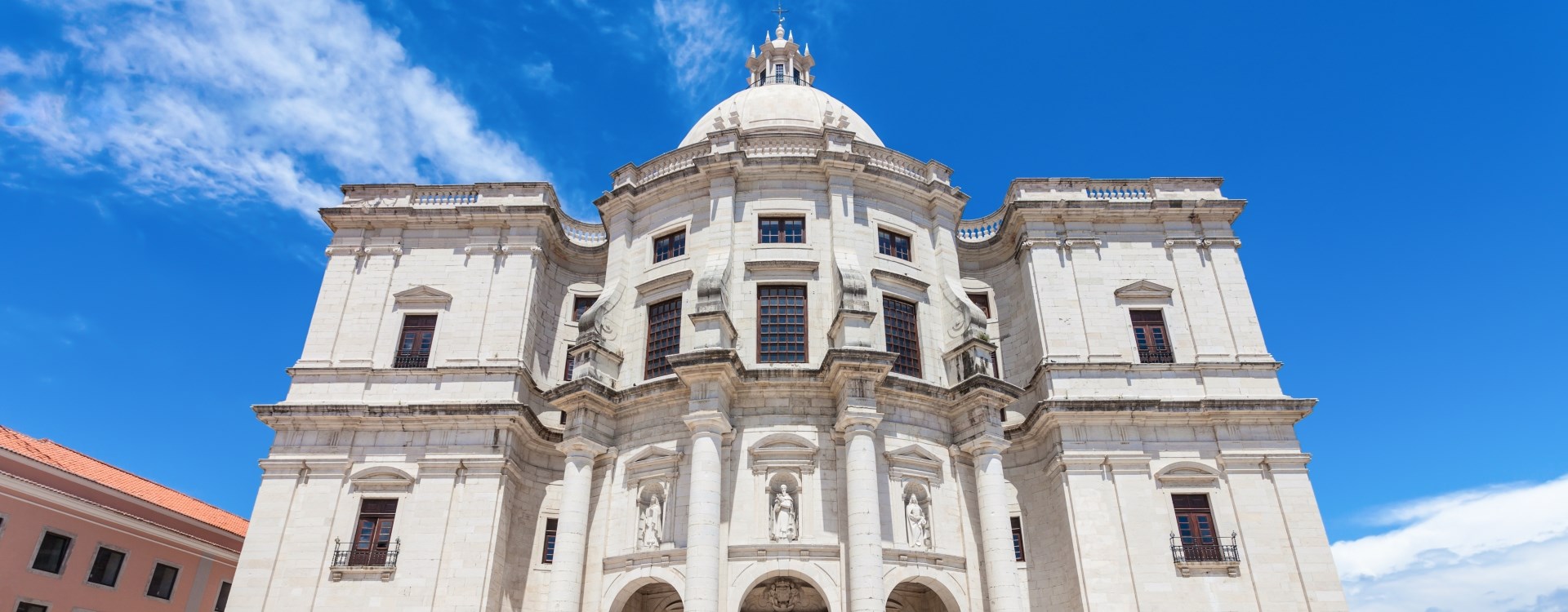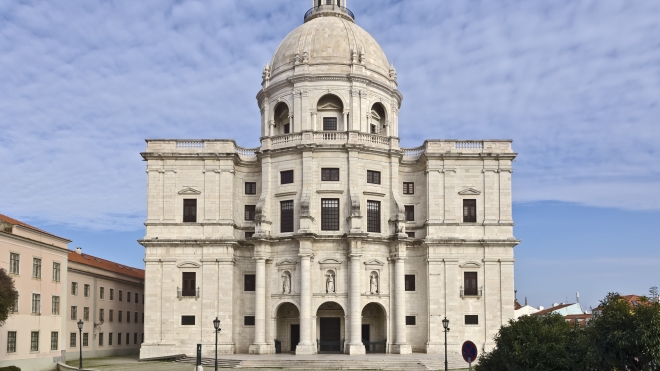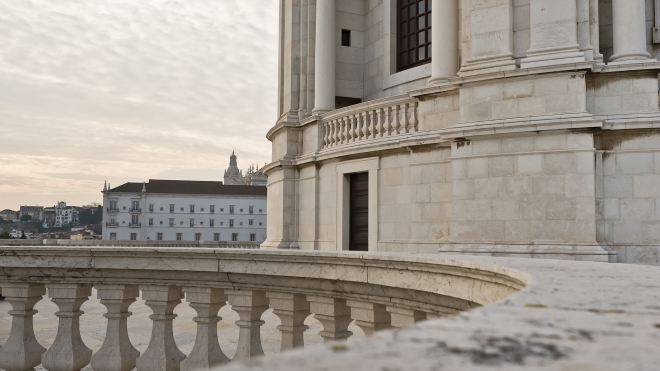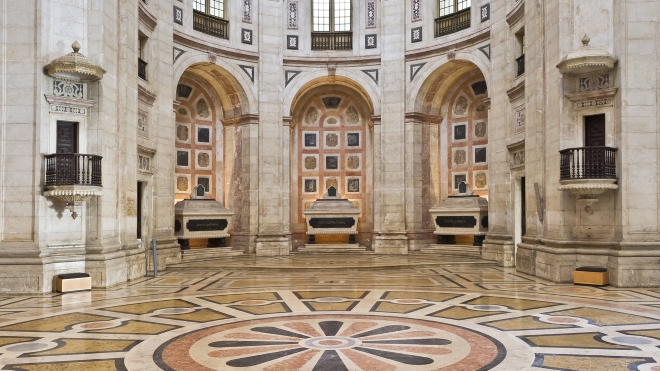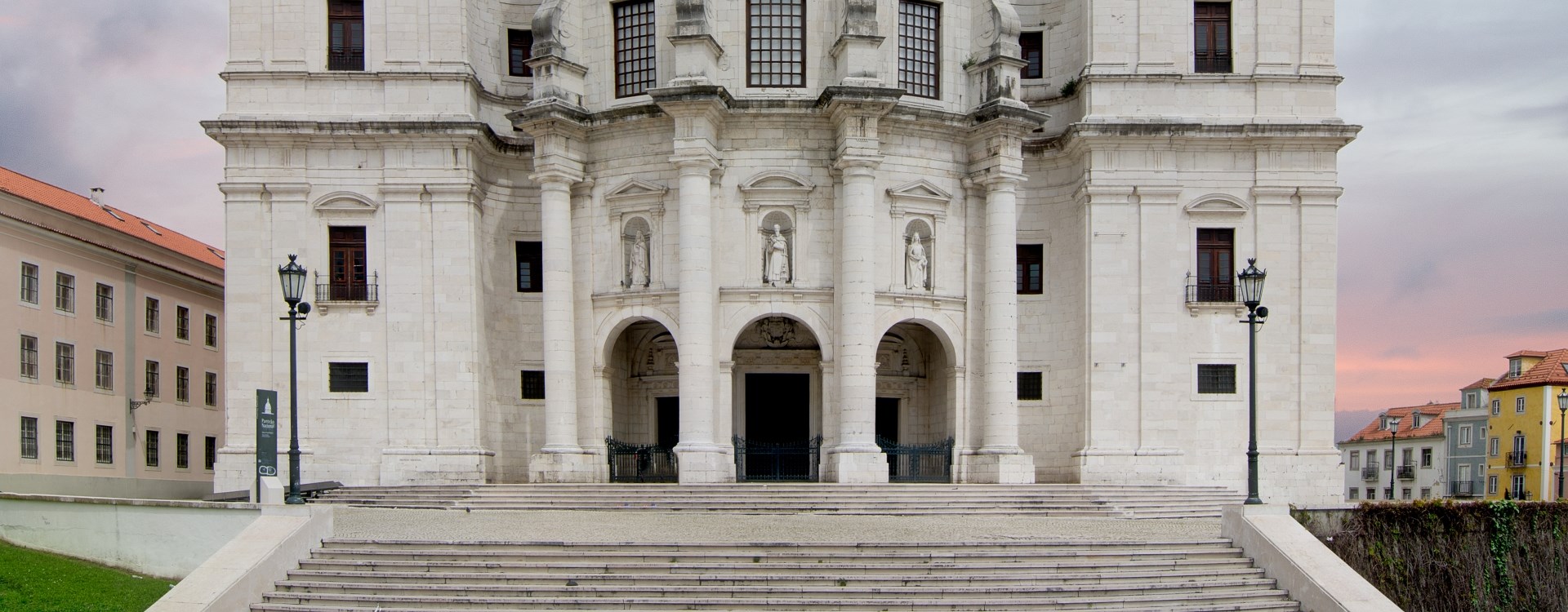The National Pantheon is classified as a national monument, and is considered a masterpiece of baroque architecture, designed by architect João Antunes. It was erected through the reconstruction of the ruins of the ancient church of Santa Engracia, which was destroyed in 1681. Despite its construction having started in the XVII century, was only completed in the mid XX century, a fact that gave rise to the well-known Portuguese expression “works of Santa Engrácia”.
The building has an orthogonal plan with a central nave, surrounded by four turrets. The imposing dome, that can be seen by various locations of the city, the interior marble décor, the portal and the grandiose columns of the main facade are a few of the standout features of this building. On the terrace you can enjoy extensive views over the Tagus river and over Lisbon's historical centre.
Currently, it hosts the tombs of illustrious personalities, such as the Presidents of the Republic, but also of those who stood out in areas as diverse as literature (Almeida Garrett, João de Deus, Sophia de Mello Breyner Andresen), music (Amália Rodrigues) and sports (Eusébio da Silva Ferreira).
The National Pantheon provides 5 spaces for events, but only for those with a cultural nature, carefully selected and framed with the dignity of the venue.


